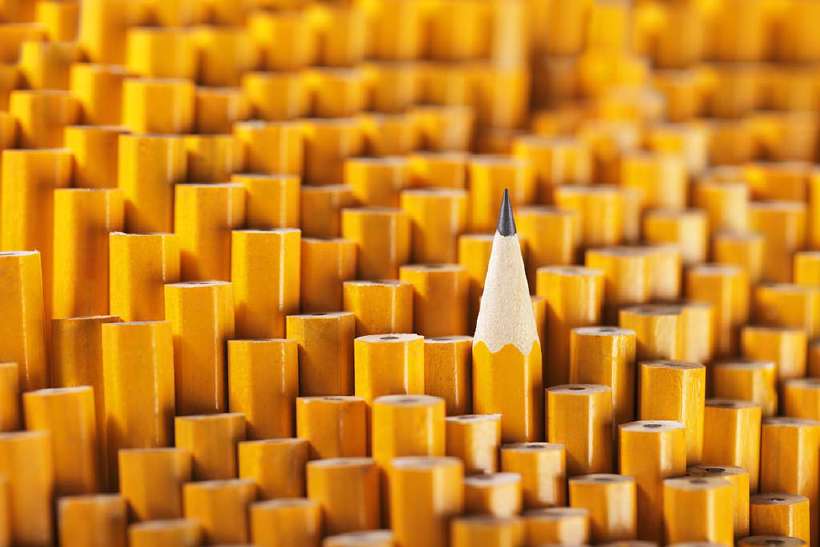How Did Pencils Originate?
Home / Science for Kids / 5Ws & H For Kids / How Did Pencils Originate?
Not many people know that the pencil they use everyday can trace its history back 2000 years! Early writers, or scribes as they were called, of ancient Egypt, Rome and Greece wrote on forms of paper called papyrus.
They used a stylus which was a metal rod made of lead. That is why we still call the black core of the pencil as “lead” even though it is made from graphite!
Graphite was discovered sometime in the 16th century in England. Legend has it that people found bits of shiny, black graphite clinging to the roots of a fallen tree. The whole countryside was abuzz with talk about this mysterious mineral, which soon came to be known as “plumbago” or, more commonly, “Blacklead.”
Graphite left a dark mark, making it ideal for use by writers and artists. But it was so soft and brittle that it required a holder. At first, sticks of graphite were wrapped in string. Later, the graphite was inserted into wooden sticks that had been hollowed-out by hand! The wood-cased pencil was born.
![How Did Pencils Originate? [Illustration by Anup Singh]](/media/5wh-47_1_hu98b26851897abed6ef787487b78b11b2_8627_820x0_resize_q60_box.gif)
Graphite, was discovered in the 16th century. People found that graphite could be used to write on paper. But graphite was very soft and would break easily. People would wrap it with twine or string so that they could hold it to write.
Strings were not very efficient and sometimes came undone when writing. Someone then thought of taking two pieces of wood and tying it on both sides of the graphite and tying it with strings.
Much later it was found that wooden pieces could be drilled through and the graphite inserted within. Thus, the humble pencil was born.
Pencils soon came to be produced commercially. In 1662, Germany started manufacturing pencils. These were highly polished pieces of wood and unpainted.
As more and more manufacturers started making pencils, they needed some way to distinguish the makers of the pencils. By the end of the 19th century, the wood casings began to carry the manufacturer’s name.

Early American pencils were made from Cedar. Cedar wood, either red cedar or incense cedar was used as the wood was strong and didn’t break easily. Later pencils were made from tropical rainforest trees.
However, pencils are no longer made from wood as forests are getting depleted and trees are getting scarce. Most pencils today are woodfree or are made from plastic.
The inside of a pencil or the ‘writing core’ is made with a mixture of graphite and clay. By varying the ratio of graphite or clay, manufacturers can increase or decrease the “hardness” of the core.
The hardness of the core is often marked on the pencil in numbers and with alphabets. The higher the number the harder the writing core like 2, 3 or HB. The letter “H” indicates a hard pencil and the letter “B” indicates the blackness of the pencil’s mark. So a pencil marked “HB” means it is hard and black; a pencil marked “HH” is very hard but light. The letter “F” indicates that the pencil sharpens to a fine point.
Some pencils come with small erasers attached to its back. Earlier erasers were not part of the pencil. In 1858, Hyman Lipman of Philadelphia filed a patent to attach erasers to pencils. These small erasers are called plugs and these are crimped on to the pencil in the factory itself. These erasers are not true rubber at all but made from synthetic rubber or vinyl.
Pencils are useful in more ways than one. For one, they can write 40,000 words or draw a line, if you are interested, for 70 kilometres! They can write in zero gravity, or even under water! So if you ever decide to go scuba diving or take a space walk and have an urgent desire to write something, be sure to have a pencil in your pocket.
657 words |
6 minutes
Readability:
Grade 6 (11-12 year old children)
Based on Flesch–Kincaid readability scores
Filed under: 5ws and h
Tags: #letters, #strings, #rubber, #pencil
You may also be interested in these:
Let's Tango
The Magnetic Fish Bowl
The Magnetic Fish Bowl
Letter Holder
Going to School